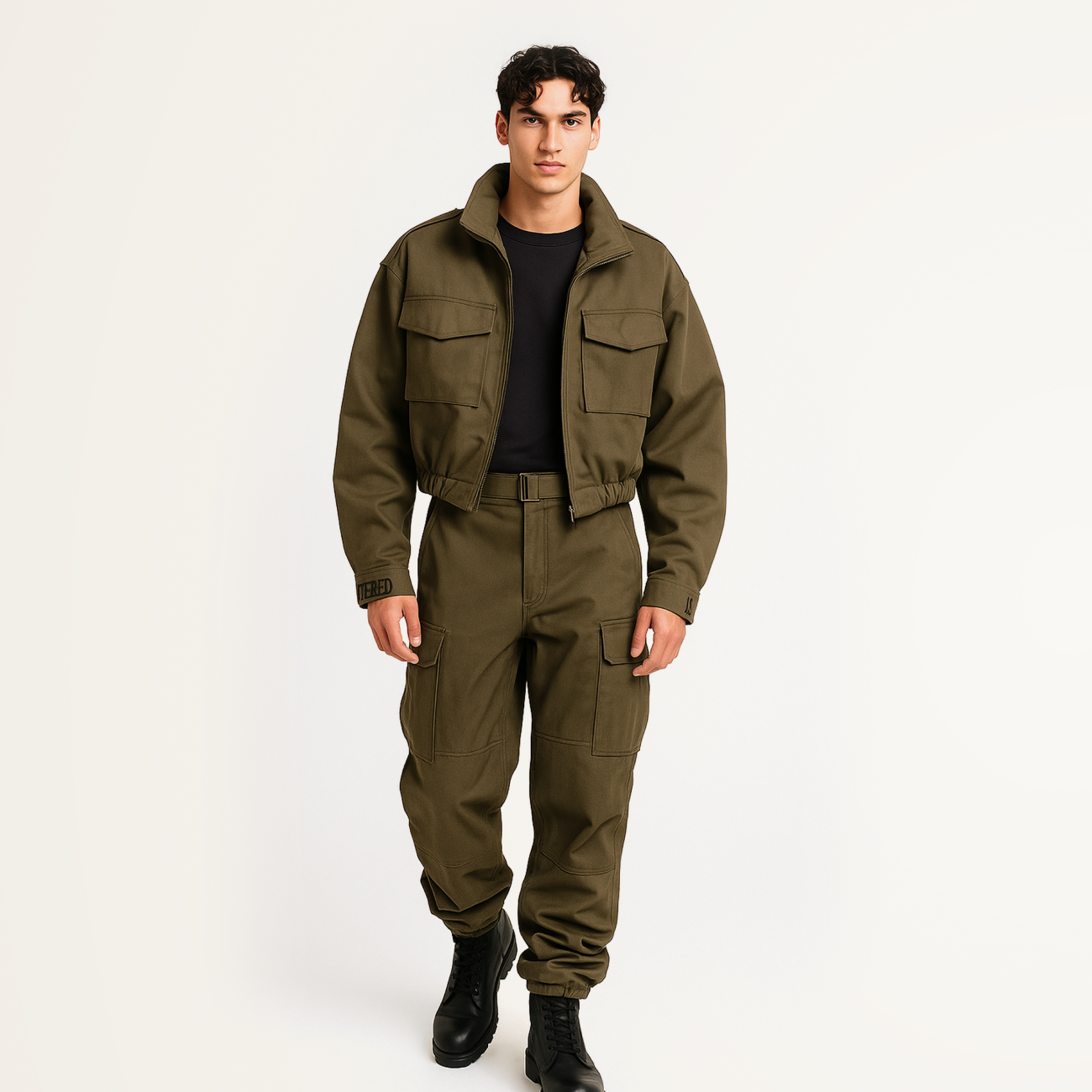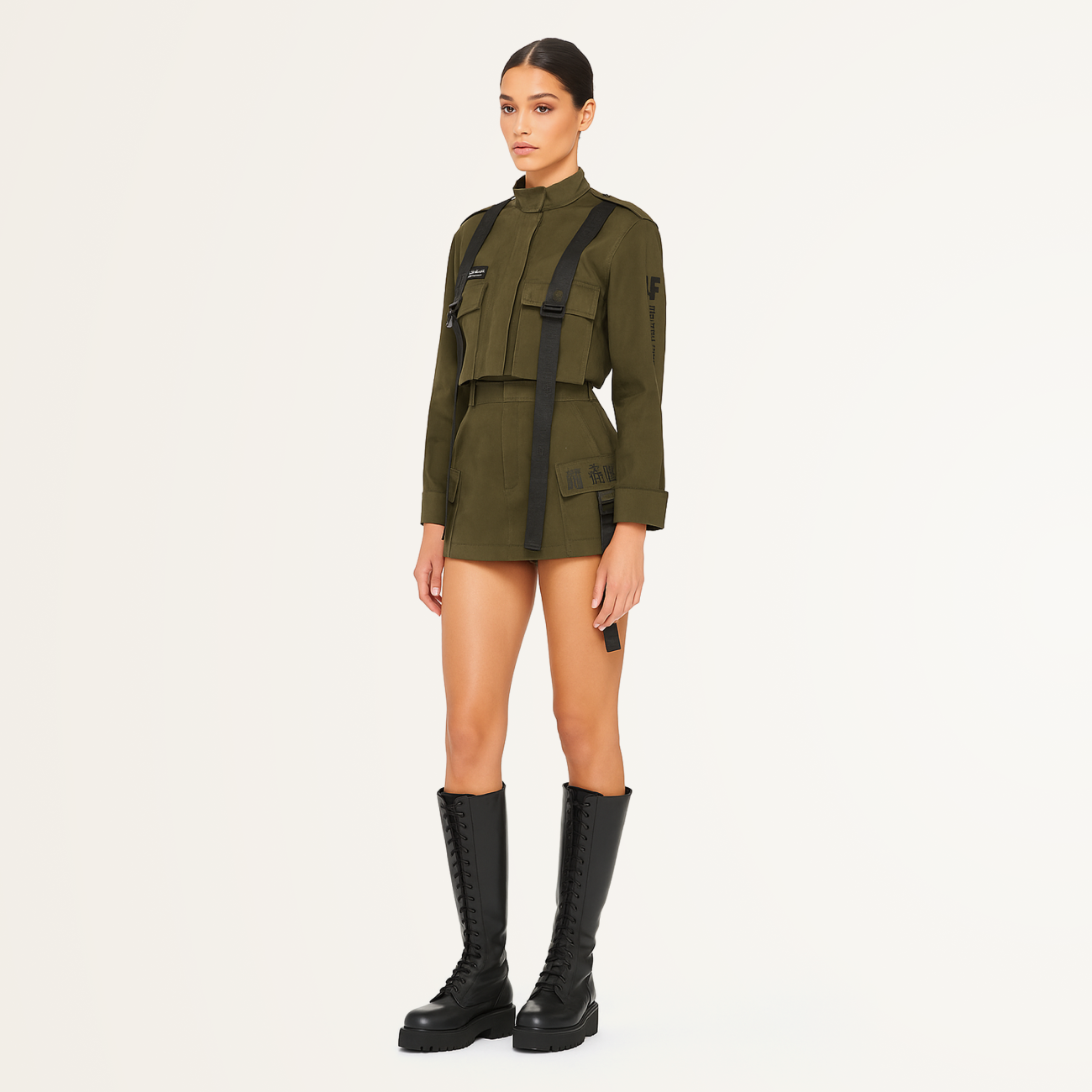Military
Military style is more than just clothing; it’s an expression of strength, confidence, and readiness for action. This style emerged out of necessity, as military uniforms became the foundation for durable and practical wardrobe pieces in civilian life. During and after World War II, military aesthetics inspired many designers who drew from the structure and utilitarianism of uniform and gear.
Over time, military style evolved from a symbol of wartime into a cultural phenomenon, resonating in the modern world through ideas of resilience, independence, and determination. While in the 1970s it was used as a symbol of protest and anti-war sentiment, today it is associated with a spirit of freedom and personal power.
History
The history of military style traces back to ancient times, when clothing served not only as a symbol of status but also as a means of survival. However, as a fashion direction, military style took shape in the 20th century.
World War I (1914–1918) was a turning point when military uniforms became visible to the general public. Soldiers returned home wearing their uniforms, and elements such as overcoats and cargo trousers began to appear in civilian clothing. Women’s fashion also started to adopt aspects of men’s military attire, as many women worked in factories and needed more practical and durable garments.
World War II and the post-war years (1939–1950) brought even more significant changes. Due to shortages of materials and resources, fashion became simpler and more functional. Iconic pieces like the M-65 jacket, originally developed for the U.S. Army, gained popularity, as did trench coats worn by both soldiers and civilians. Camouflage prints also began to appear in everyday wardrobes—a trend that persists to this day.
In the postwar decades, military style became a symbol of the anti-war movement, especially in the U.S. Camouflage and army jackets were worn as protest against the Vietnam War. Youth, hippies, and activists adopted military clothing as a statement of opposition and rebellion. Military style became a part of street culture—an emblem of resistance and alternative thinking.
In the 1980s, military fashion firmly entered the mainstream. Designers began incorporating military uniform elements into their collections, transforming utilitarian garments into high-fashion items. This was the era of structured shoulders, bulky jackets, and bold use of camouflage. Military jackets, cargo pants, belts, and combat boots became symbols of strength and independence, beyond their military roots.
In the 1990s and 2000s, military style took on a streetwear identity, heavily adopted by rappers and figures in hip-hop culture. Camouflage pants, oversized jackets, boots, and caps became part of urban fashion and a symbol of inner-city strength and freedom. These pieces offered room for creative styling, blending with sport-chic and casual aesthetics.
Today, military style has evolved to meet sustainable fashion trends and the demand for functionality. It remains relevant in urban wardrobes, offering durable and comfortable options. The blending of military elements with other styles—from safari to street to high fashion—has become the norm. Designers continue to create collections that nod to history while adapting to modern life, maintaining military style as a symbol of individuality and inner strength.
Signature elements of the style
Color palette
The key colors of military style are earthy tones such as olive, khaki, gray-green, camouflage shades, and occasionally black. These colors symbolize a connection with nature, camouflage, and strength.
Prints
Camouflage is the signature print, instantly recognizable and conveying the essence of military aesthetics. Also popular are patterns that mimic textures reminiscent of military fabrics like cargo and jute.
Textures
Military style is rich in diverse textures: from sturdy cotton to waterproof fabrics like nylon, and coarse wool fabrics ideal for colder seasons. The main requirement is durability and toughness, allowing these materials to withstand both urban and natural environments.
Cuts & silhouette
Straight and practical silhouettes with a focus on utility and layering are the foundation of military style. Jackets, coats, and trousers often have a structured appearance, featuring patch pockets, zippers, and belts. The cut is designed to create looks that emphasize strength while allowing freedom of movement.
Wardrobe essentials
- M-65 Jacket – the iconic four-pocket jacket originally used by the U.S. Army.
- Cargo Pants – wide-leg trousers with patch pockets, practical and comfortable for everyday wear.
- Military-Style Coat – featuring a sharp shoulder silhouette, often adorned with gold or copper buttons.
- Camouflage Pieces – from trousers and shirts to accessories, camouflage emphasizes the essence of the style.
- Combat Boots – chunky boots that pair well with military looks or other styles to add a rugged edge.
Substyles
Email: support@belt-app.com


















